Have you ever looked up at the night sky and wondered, how do stars form? How and when did the first star form? Stars might seem like magical points of light, but their journey starts in a real place—huge, cold clouds called molecular clouds in space. The tale of star birth is as ancient as the universe itself, and it’s always changing before our eyes.
Check this article out, too: Dark Matter Experiments: The Search For Hidden Mass
Think back to billions of years ago. Vast interstellar clouds floated through space. These cosmic nurseries were the seeds of future stars. As time passed, these clouds collapsed – which is when stars start to form. Gravity takes over, pulling the gas and dust together, causing a gravitational collapse. As the material gets squeezed into a smaller space, it heats up and forms a baby star, a protostar. It’s not shining like the stars you see yet at this stage, but it’s getting closer!
Over time, the protostar grows and might become a T Tauri star, a young star that’s a little wild and unstable (see my star classification guide). Eventually, when it gets hot enough, a big change happens. Nuclear fusion starts in its core, and the star lights up, becoming a main sequence star—like our Sun!
This is just a very short, simple, nano-second explanation of how stars form. There is much more behind that we are still trying to understand. I’ll try to explain how do stars form and show you some of the star sequences and some other details about stars.
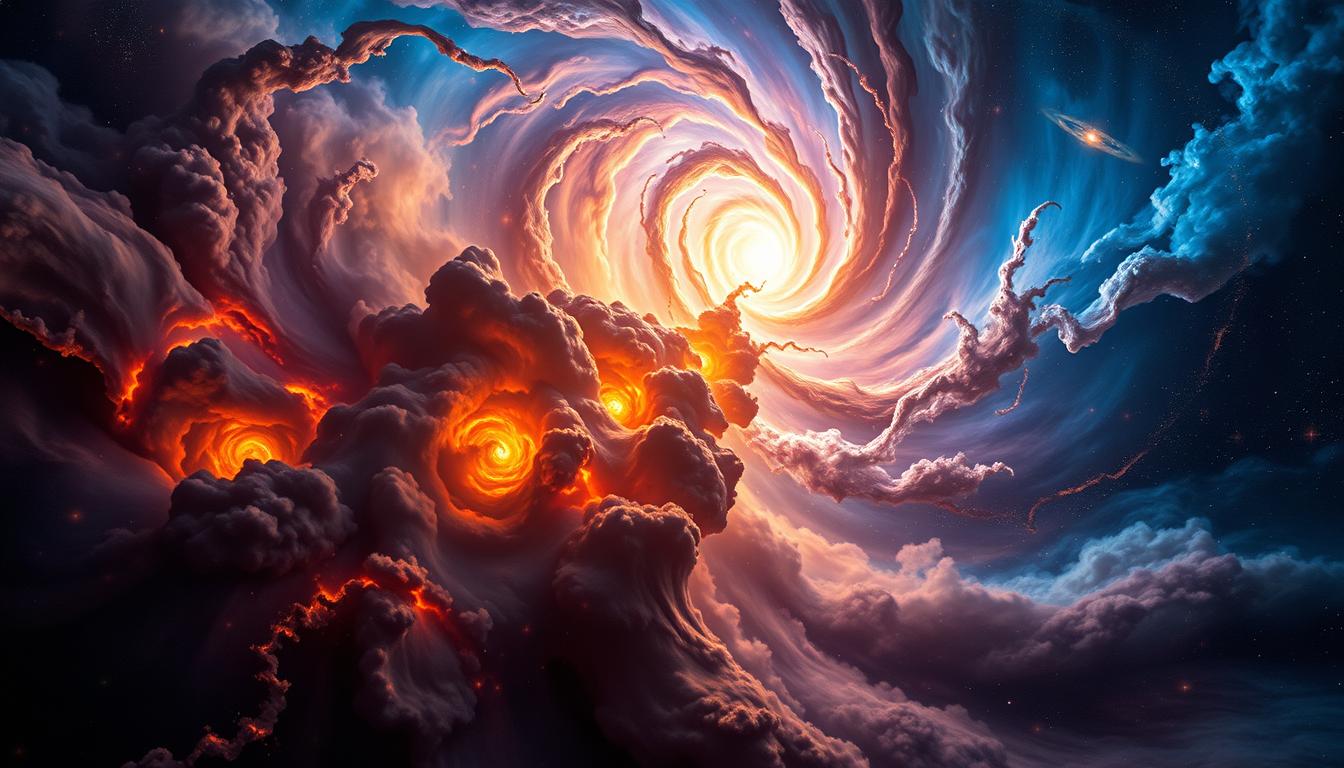
How do Stars Form: The Birth
Story of how stars form depends on a lot of different things. Initial conditions, gravity, and the chemical components available at the time. It’s a mix of invisible forces like dark matter, dark energy, and other similar substances and simpler materials coming together. Let’s look at the three key factors that start the star formation process right from the beginning.
Initial Conditions in Space
Stars are born in molecular clouds, enormous regions of cold gas and dust scattered throughout galaxies. These clouds contain mostly hydrogen and helium, with traces of heavier elements. These clouds are massive, sometimes stretching across light-years. They may seem empty, but they’re filled with tiny particles and gases like hydrogen and helium.
Sometimes, these clouds are disturbed. A nearby supernova explosion, a collision with another cloud, or even the gentle push of galactic movement can create ripples. These ripples cause parts of the cloud to gather more material, making some areas denser. It’s in these denser spots that a star’s story truly begins.
The Role of Gravity in Star Formation
Gravity plays the leading role in turning these dense areas into stars and is essential to star birth. Gravity takes over once a part of the molecular cloud gets dense enough, pulling in more gas and dust. The material starts to clump together, forming a growing ball that gets hotter and hotter as it shrinks. This process is called gravitational collapse.
At this point, the ball of gas is called a protostar. It’s like a baby star—not bright enough to shine like the stars we see but growing and changing. Over time, gravity keeps squeezing the protostar, heating it up even more. Eventually, the core gets so hot that nuclear fusion starts. This is when the real magic happens: the star begins to shine, officially becoming a main sequence star like our Sun.
Chemical Components Required for Stars
You might wonder what’s inside those giant clouds that let them make stars. The most important ingredient is hydrogen, the universe’s simplest and most common element. Stars are basically giant hydrogen furnaces. They turn hydrogen into helium through nuclear fusion, which releases the energy that makes them shine.
But hydrogen isn’t the only thing in these clouds. There’s helium and tiny amounts of other elements like carbon, oxygen, and iron. Even the dust particles, which might seem like a nuisance, play an important role. They help the cloud cool down, making it easier for gravity to do its job. These elements come together in just the right way, like ingredients in a recipe. A star couldn’t form without them, and our universe would look very different.
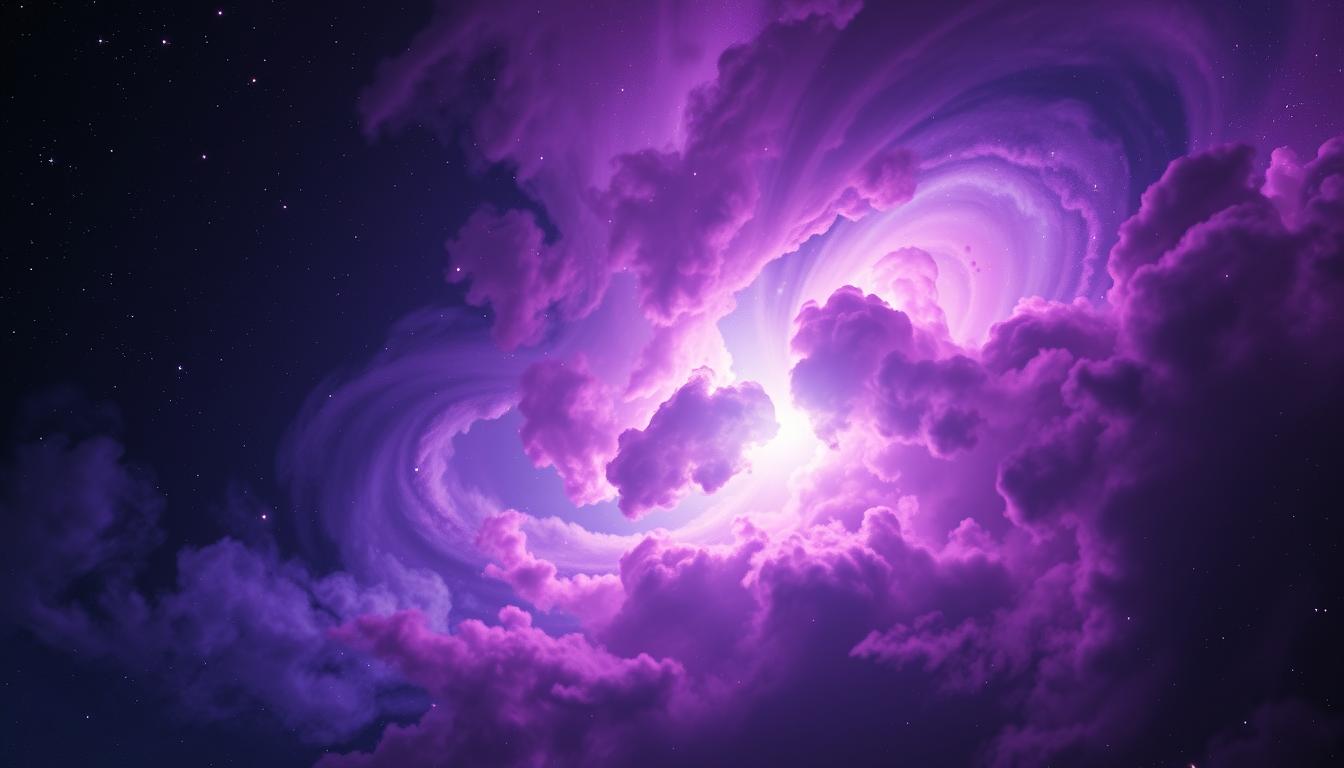
Gravitational Collapse and the Path to Star Birth
Once gravity takes over, a fascinating chain of events begins. Imagine a snowball rolling down a hill, gathering more snow, and growing bigger as it goes. This is what happens during gravitational collapse, except instead of snow, it’s gas and dust being pulled into the forming star. Let’s take a closer look at the key steps along this path.
Core Fragmentation Process
As the molecular cloud collapses, it doesn’t happen smoothly. Picture a blob of dough being kneaded; it stretches and breaks into smaller pieces. This is similar to what happens during core fragmentation. As gravity takes hold, massive molecular clouds start to break apart. These fragments become the seeds of future stars. The denser regions pull in more material, growing larger and denser over time.
The collapsing cloud can split into smaller chunks, each forming its own protostar. This is why many stars are born in clusters, like siblings sharing the same cosmic nursery. This process can sometimes lead to the birth of binary or even multiple-star systems, where stars orbit each other. Our own Sun likely had a few “siblings” when it was born, though they have long since drifted away.
Temperature Changes During Collapse
Here’s where things start to heat up—literally. As the cloud collapses, it heats up. The center of the collapsing cloud becomes increasingly hot and dense. Gravity pulls more material into the center; it causes the core to compress and heat up. This rising temperature is a key factor in protostar formation. Imagine squeezing a ball of clay in your hands; the more you press, the warmer it feels. In the forming star, temperatures can soar to thousands of degrees.
This heating is critical. It’s what eventually leads to nuclear fusion, the process that powers stars. Without this dramatic temperature rise, the protostar would never have become bright enough to light up. The process of gravitational collapse is a delicate balance. If the cloud is too small, it may not have enough mass to form a star. If it’s too large, it might fragment into multiple stellar objects. This balance shapes the diversity of stars.
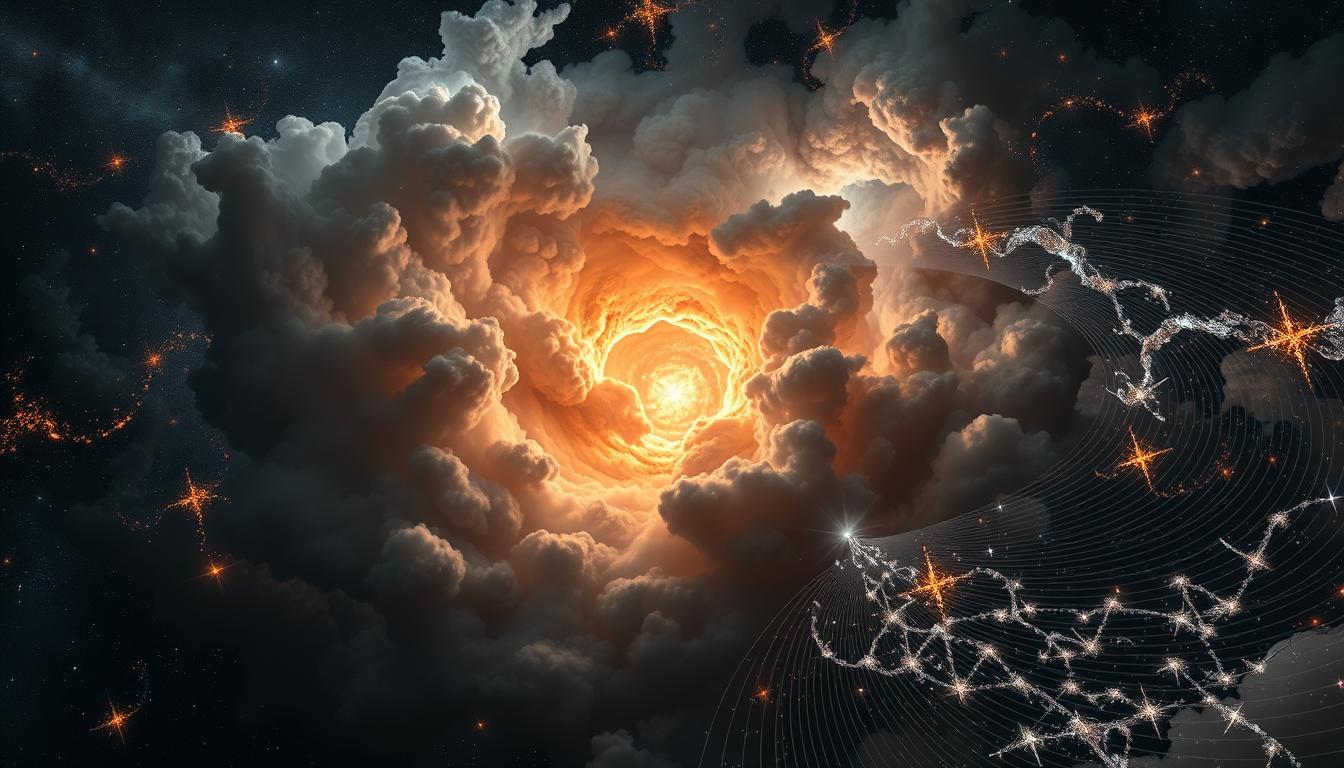
From Protostar to Young Stellar Object
After a protostar forms, it’s still far from becoming a fully-fledged star. It enters a phase of rapid development, evolving into what we call a young stellar object (YSO). Let’s explore two key steps in this transformation.
Accretion Disk Formation
As the protostar grows, it pulls in more material from the surrounding cloud. But not all of it falls directly onto the star. Instead, much of the gas and dust form a spinning disk around the protostar, called an accretion disk. Think of it like water swirling around a drain before being pulled in. This disk isn’t just a side effect; it’s an important part of the star’s development. It’s also where planets, moons, and other celestial objects might start to form. Our own Solar System was once an accretion disk around a young Sun!
Proto-stellar Evolution Stages
The protostar goes through many stages. During this time, the changes the protostar undergoes bring it closer to becoming a true star. First, it’s cool and dim, hidden in a dense cloud. As it grows, its core gets hotter. It’s still unstable, with bursts of energy as it pulls in material. These bursts can even push some of the surrounding gas away, creating jets of material shooting out from the poles of the protostar. These jets are like fireworks announcing the birth of a star.
When the core hits about 2,000 Kelvin, it starts to glow in infrared light. This marks the start of a true protostar. The protostar keeps getting hotter and denser as it gets more material. During this time, the protostar releases energy in winds and jets. These outflows help clear away material and slow down growth. Eventually, it becomes hot enough to shine in visible light, becoming a young stellar object. As the protostar stabilizes and nuclear fusion fully ignites, it officially graduates to its next life stage: a main sequence star. The journey from a cold molecular cloud to a shining star is complete.
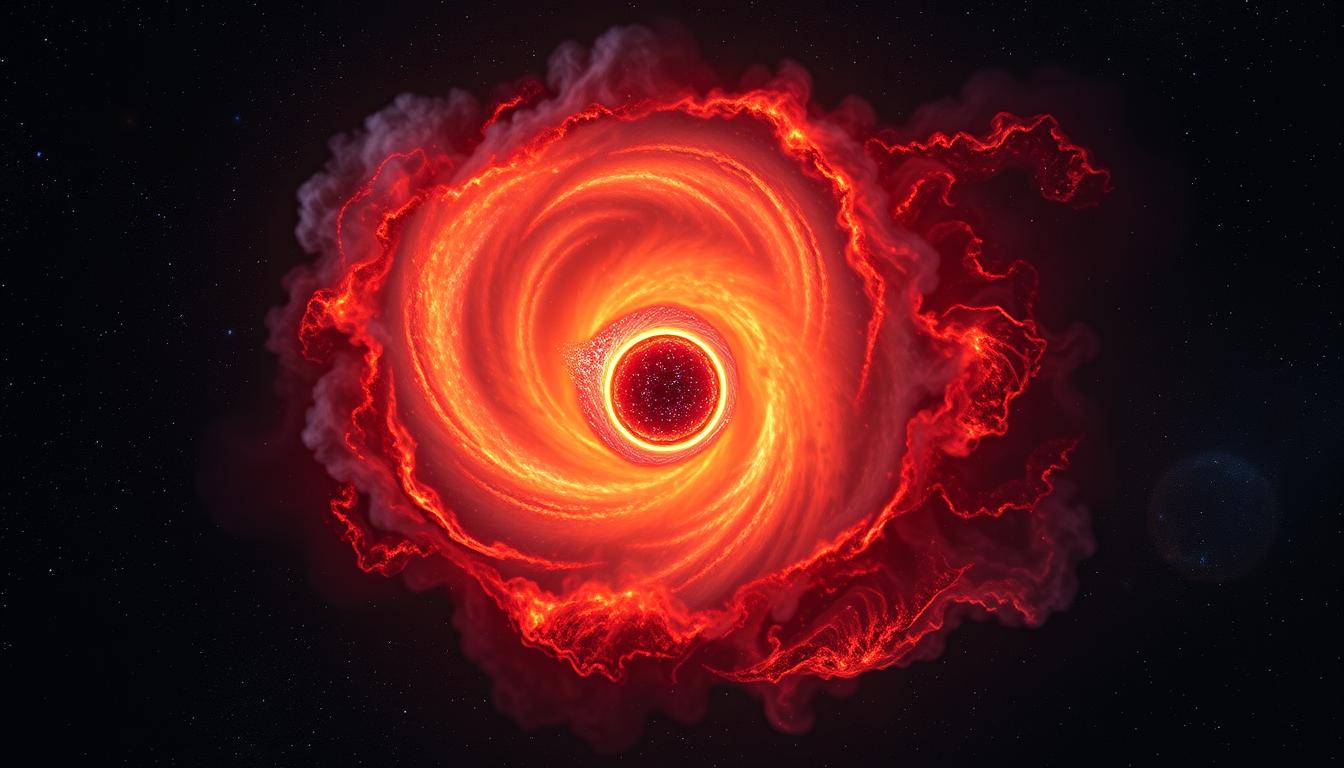
T Tauri Stars: The Teenage Years of Star Formation
Before settling into a stable adulthood as a main sequence star, many stars go through a wild teenage phase known as the T Tauri stage. T Tauri stars are an exciting part of stellar evolution. They are like the teenagers of the star world, showing us how stars like our Sun start out. They’re often surrounded by the leftover material from their accretion disks, which gives them a messy, chaotic look.
T Tauri stars are young and are getting smaller. They are less than 10 million years old. Their brightness changes a lot because of material falling onto them and magnetic activity. This makes them very interesting to scientists studying how stars form. They throw out powerful stellar winds, which can blow away any remaining gas and dust nearby. This phase lasts only a few million years, but it’s a critical time when the star clears its surroundings and prepares to shine steadily for billions of years. As T Tauri stars get smaller and hotter, they reach the main sequence. This is the end of their ‘teenage’ years. It’s a big step in star birth as they start their long, stable life.
The Impact of Star Mass on Formation Processes
A star’s mass significantly shapes its formation process. Bigger stars develop faster and burn brighter, and smaller ones take their time and shine steadily. Let’s see how much effect mass has on the formation of stars.
Low-Mass Star Formation
Low-mass stars, like our Sun, form slowly. They gather gas and dust over millions of years. As they grow, they heat up until nuclear fusion starts. This marks their start in the main sequence star phase. They’ll spend most of their lives there. Once nuclear fusion begins, these stars settle into the main sequence and can shine for billions of years. These stars are the dependable ones, providing light and warmth to nearby planets.
High-Mass Star Formation
High-mass stars form quickly. These giants eat up a lot of material fast. Their strong gravity pulls in huge amounts of gas and dust. This quick growth leads to early nuclear fusion. They quickly join the main sequence star stage. High-mass stars burn through their fuel in just a few million years, often ending their lives in spectacular supernova explosions.
Brown Dwarf Formation
Sometimes, a collapsing cloud doesn’t gather enough material to ignite nuclear fusion. When this happens, the object becomes a brown dwarf. Brown dwarfs are often called “failed stars” because they don’t shine brightly like true stars. However, they still glow faintly due to the heat left over from their formation. These objects bridge the gap between planets and stars, showing us the diverse outcomes of star formation.
Brown dwarfs are in between planets and stars in mass. These failed stars don’t have enough material for nuclear fusion. The brown dwarf formation is similar to both stellar and planet formation. They are unique cosmic objects.
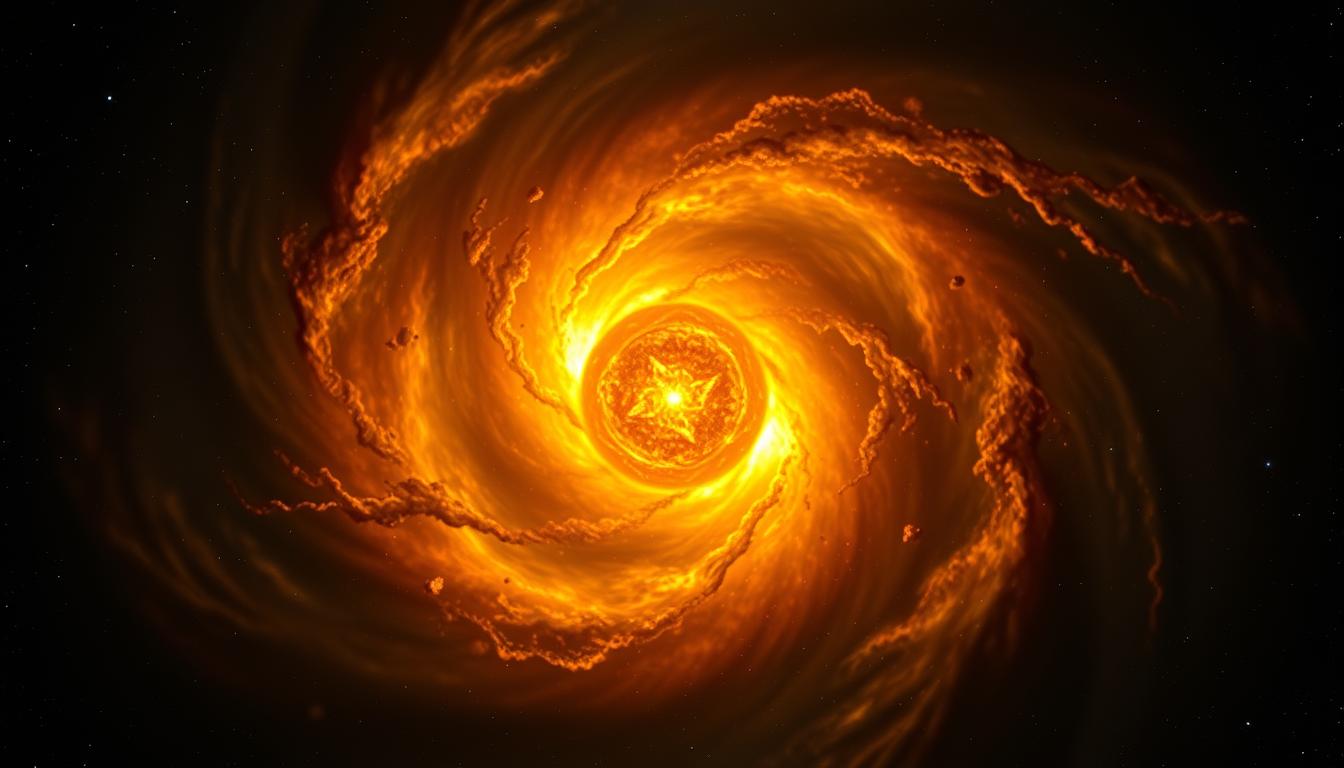
Conclusion
Star formation isn’t an easy and a short thing. It takes millions – if not billions – of years to complete. And in the end, sometimes they shine for billions of years like our Sun or explode in a supernovae explosion. All that effort may be for nothing! It starts quietly, from nothing. Star birth starts in dense molecular clouds, where gravity pulls everything together. We’ve seen how this journey from a cloud to a shining star has many stages. These include gravitational collapse, protostar formation, and the birth of T Tauri stars.
The mass of a forming star greatly influences its story. Low-mass stars, like our Sun, form differently than high-mass ones. Even brown dwarfs and failed stars have their own unique birth stories. Overall, every step in star formation is actually important. We understand how galaxies may form, how stars are born and die, and a lot of important parts of how the universe functions.
FAQ
What are the initial conditions needed for star formation?
Star formation starts in molecular clouds. These are huge areas filled with cold, dense gas and dust. The clouds must have enough mass and density to collapse under gravity. They also need elements like hydrogen, helium, and some heavier elements for stars to form.
How does gravity play a role in star formation?
Gravity is key in star formation. When a part of a molecular cloud gets denser, it starts to collapse. This collapse breaks the cloud into smaller parts, forming protostars. Gravity pulls more material towards the center. This increases the density and temperature until nuclear fusion can start.
What is a protostar?
A protostar is an early stage in star formation. It’s a dense, hot core in a collapsing cloud. It’s not yet hot enough to start nuclear fusion, but it keeps growing by gathering more gas and dust. Eventually, it becomes a young star.
What is an accretion disk?
An accretion disk is a disk of gas and dust around a protostar. As the protostar collapses, material from the cloud falls towards it. This material forms a disk due to angular momentum. The disk helps the protostar grow by accreting more mass.
What are T Tauri stars?
T Tauri stars are young, pre-main sequence stars. They are less than 10 million years old and are in the early stages of evolution. These stars are known for their variability, strong winds, and lithium in their spectra.
How long does it take for a star to form?
The time for a star to form varies by mass. Low-mass stars like our Sun take about 50 million years to reach the main sequence. High-mass stars form in just a few hundred thousand years. The whole process, from cloud collapse to main sequence star, can take tens of millions of years.